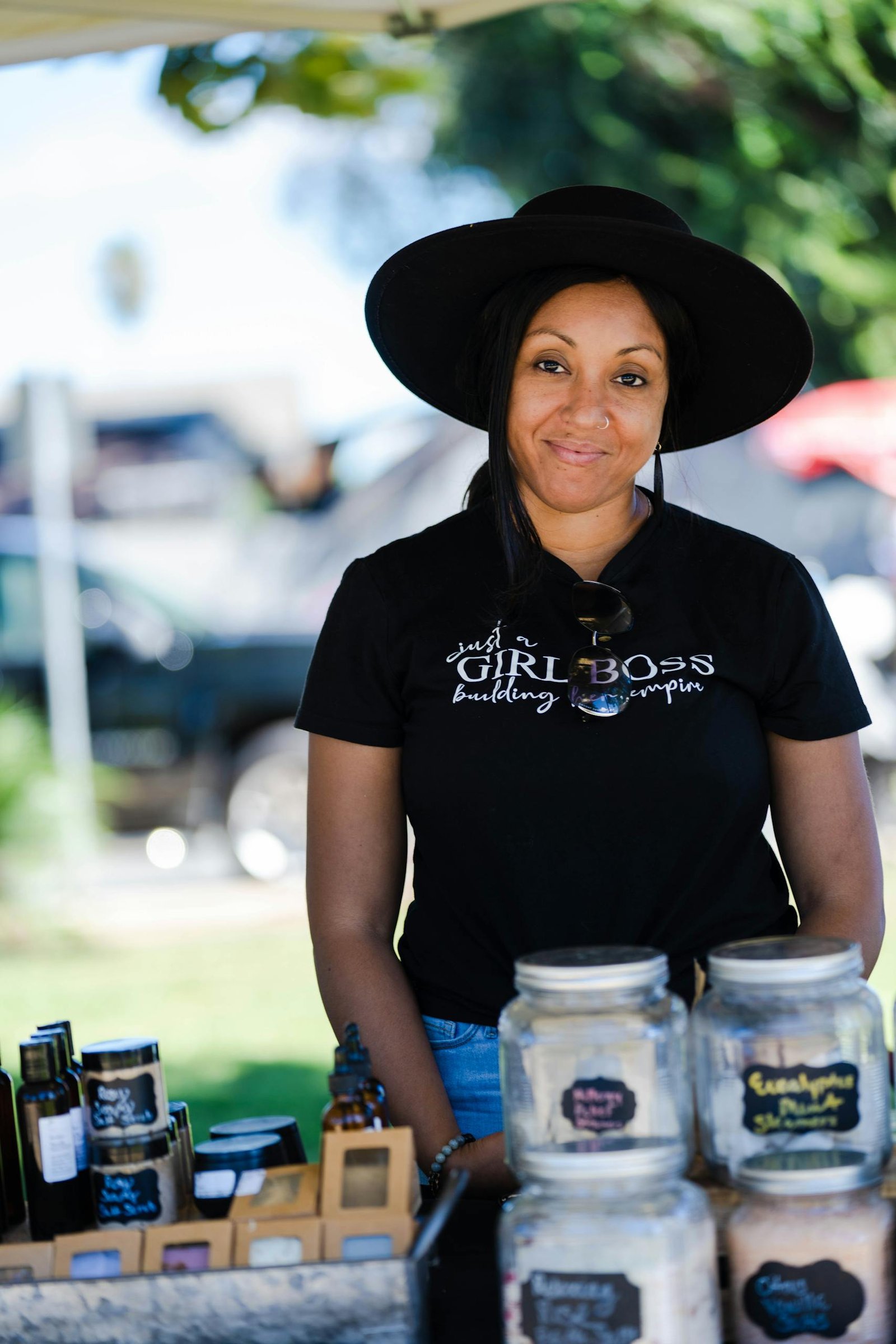6 Reasons to Open a High-Yield Savings Account: Before Starting Your Next Side Hustle, Get This Free Money First

1. The Free Money Most People Ignore
Let’s call it out: nearly 1 in 4 Americans don’t have a high-yield savings account. That’s like saying no thanks to free cash. You wouldn’t walk past $20 bills on the sidewalk, so why leave yours on the table at a bank paying 0.01% interest? A high-yield savings account (HYSA) is the simplest power move most people overlook. It’s not flashy, but it’s the foundation for peace, momentum, and clarity.
This isn’t about being a finance nerd. It’s about being the woman who doesn’t play herself by letting money nap in a lazy account. Your cash deserves to work as hard as you do. Imagine sitting at brunch with friends knowing that while you sip mimosas, your money is multiplying in the background. That’s alignment without stress.
And here’s the kicker: HYSAs aren’t just for financial experts. Teachers, nurses, single moms, entrepreneurs, and corporate queens alike can make this move today. This is money made simple — no trading apps, no charts, no jargon.
2. Why High-Yield Savings Accounts Matter

Here’s the truth: traditional savings accounts are giving you pennies, while top high-yield savings accounts are paying around 4% APY (FDIC data). That’s literally 100–200 times more than your old-school bank.
Peace isn’t built on vibes — it’s built on cash flow you can count on. Your Momentum Money ($500 fast) and your Stability Fund (3–6 months of expenses) belong in a high-yield savings account. Why? Because they stay liquid, insured, and quietly earning while you live your life. That’s clarity-first finance.
Picture this: your car breaks down, and instead of panic, you swipe your debit card with confidence. Your HYSA transfer is already in motion, and your life doesn’t skip a beat. That’s money creating options.
Or imagine planning for back-to-school season — clothes, supplies, activities — and instead of swiping credit, you pull straight from your Stability Fund. A high-yield savings account makes those seasons of life smoother, less stressful, and fully covered.
And if you’re thinking about retirement? Starting with an HYSA for your short-term cash goals is the smart launch pad before investing. It keeps you from cashing out investments early when emergencies hit. That’s wealth protection in action.
3. Check the Receipts

Numbers don’t lie, and here’s what they look like in real life at 4% APY:
- $500 → about $20 a year in interest
- $1,000 → about $40 a year in interest
- $10,000 → about $400 a year in interest
- $20,000 → about $800 a year in interest
- $40,000 → about $1,600 a year in interest
This isn’t lottery money, but it’s the easiest income stream you’ll ever have. No hustle. No 5 a.m. grind. Just your cash sitting in the right account, multiplying quietly.
Let’s layer in lifestyle examples: $400 a year could cover your next concert ticket haul. $800 could be the weekend getaway you take without touching your paycheck. $1,600? That’s a round-trip international flight plus hotel. This is money that turns into experiences — without adding a single extra work hour to your week.
And if you’re a parent? $400 could pay for sports registration and uniforms. $800 could cover holiday gifts without touching your December paycheck. $1,600 could be summer camp fully paid upfront. That’s the power of redirecting interest into your real life.
Or think about milestones: your kid’s graduation party, your best friend’s destination wedding, or even a spontaneous solo trip. All covered with interest you earned for doing nothing but parking your cash in a high-yield savings account.
Big sister advice: You’re already doing the hard work earning your money. Why not let it return the favor?
4. Rates and Reality Check

Yes, rates change. Jerome Powell and the Fed decide whether they go up or down. But here’s the move: stop waiting for perfect. Even if today’s 4% becomes 3% next year, that’s still light years better than the crumbs your traditional bank is giving you.
Momentum beats perfection every single time. The earlier you start, the more clarity you build. You’re not chasing the market, you’re creating a foundation. That’s how financial strength works — it’s consistent action, not magical timing.
Think of it like fitness: you don’t wait for the “perfect” workout trend to land before moving your body. You start walking, lifting, stretching. The results come from consistent movement. Same with your money — deposits in a high-yield savings account create momentum that compounds over time.
And here’s the other truth: if you’re waiting for rates to climb even higher, you’re letting months or years of interest slip away. That’s hundreds of dollars you could’ve already earned. Future you will thank present you for starting now.
Consider this: even if rates dip, you still have liquidity, security, and peace. That’s something the stock market can’t promise for short-term money. A high-yield savings account is about protecting your peace and keeping your options wide open.
5. How to Pick One

Don’t get stuck in analysis paralysis. Picking a high-yield savings account is not about finding the “perfect” unicorn. It’s about keeping it simple and aligned. Look for three things:
- FDIC insured (your money is safe up to $250,000)
- No fees (because fees are financial quicksand)
- Competitive rate (around 4% right now)
That’s it. Don’t overcomplicate it. Open the account, link your checking, and set up the system. Done.
If you want to compare your options, Investopedia’s updated HYSA guide is a solid place to check current rates and see which banks are leading right now. Keep it simple: pick one, start saving, and let your system do the heavy lifting.
And remember, loyalty to your bank doesn’t pay you. If your current bank isn’t offering a competitive HYSA, move your money. This isn’t about feelings, it’s about returns.
Extra pro tip: some banks offer bonuses when you open a new high-yield savings account and hit certain deposit thresholds. That’s free money stacked on top of free money.
6. Build Your System

Here’s where you make it real. Automate your transfers every payday. Start with Momentum Money — your first $500. That quick win gives you confidence. Next, grow your Stability Fund until you’ve got 3–6 months covered. Then create buckets: Indulgence Fund for guilt-free fun, Freedom Fund for career choices, and more.
Label your accounts, automate them, and let them grow while you focus on life. That’s how you build peace without pressure and options without stress.
Let’s get practical: $50 every week turns into $2,600 a year. Add in interest, and you’ve built a small but mighty fund that covers your next hotel upgrade or cushions your next big decision. Scale it up to $200 every paycheck, and you’re stacking financial strength faster than you think.
Picture this: your Freedom Fund grows to $15,000 in a few years. That’s a career pause fully funded. That’s negotiating power when you’re offered a job that doesn’t pay what you’re worth. That’s walking away from stress without walking into debt. That’s alignment.
And don’t underestimate your Indulgence Fund. Money for spa days, shopping hauls, or a dream concert isn’t “wasteful” when it’s planned. It’s intentional living, and your HYSA gives you the confidence to say yes without guilt.
A high-yield savings account can also cover milestones like maternity leave, a cross-country move, or a semester off to finish a degree. These are major life pivots that feel impossible without a plan. With a system in place, they become choices instead of crises.
If you want a step-by-step system, grab the Your Money Era Starter Guide. It’s the exact framework to help you build these accounts without second-guessing.
Your Money Era Moment
Your next money move isn’t another side hustle. It’s setting up a high-yield savings account that pays you while you sleep. Ask yourself: What’s one small deposit you can automate this week to start building your Momentum Money? That single decision is how peace, clarity, and options start stacking in your life.
Peace that pays.
Diana Latrice
PS: For a deeper look at savings rate trends, check the FDIC’s national rates data.






